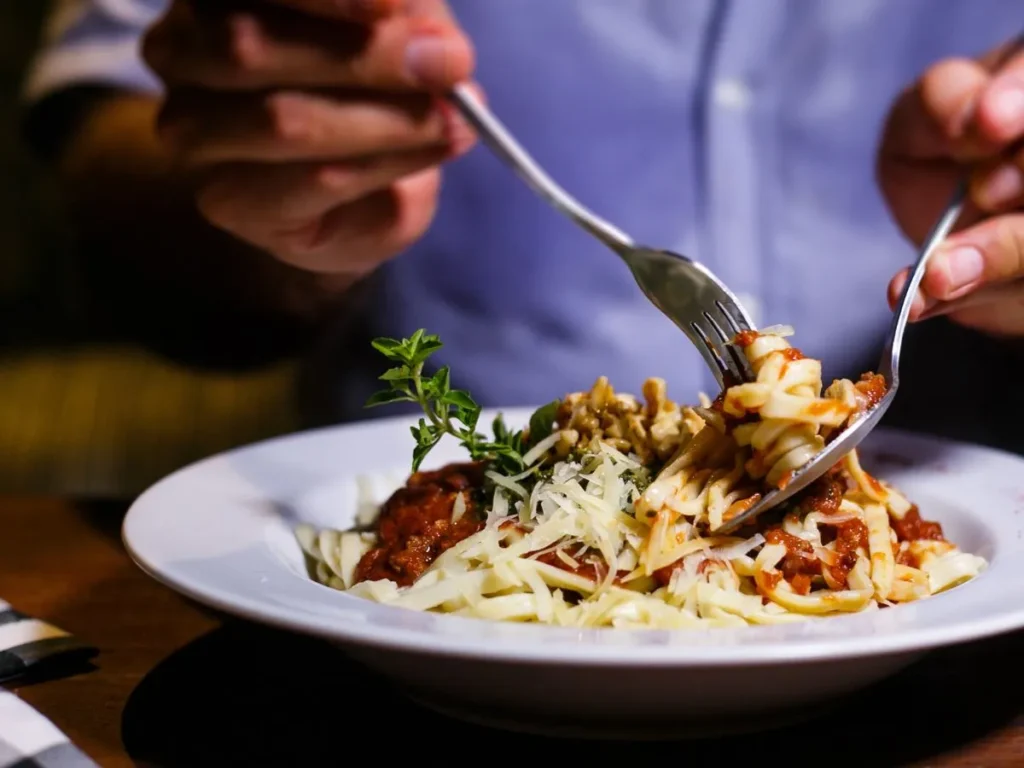Dine and dash, a term that sends shivers down the spines of restaurant owners and diners alike, refers to the act of enjoying a meal at an establishment and then leaving without paying the bill. This deceptive behavior not only undermines the integrity of the dining experience but also has significant legal and social implications. In this comprehensive exploration, we delve into the intricacies of dine and dash, shedding light on its meaning, prevalence, and the repercussions faced by those who engage in this unlawful act.
As we embark on this journey, it’s crucial to grasp the gravity of the situation. What happens if you dine and dash? This question looms large, prompting us to unravel the layers of consequences awaiting individuals who choose to partake in such reckless behavior. But before delving into the aftermath, let’s first establish a clear understanding of what dine and dash entails.
Dine and dash, often colloquially referred to as “dining and dashing,” involves enjoying a meal at a restaurant or eatery and then leaving without settling the bill. This deceitful act not only defrauds the establishment of its rightful payment but also disrupts the delicate balance of trust between patrons and proprietors. With the prevalence of dine and dash incidents on the rise, it’s imperative to delve deeper into its implications.
Throughout this exploration, we’ll navigate through various facets of dine and dash, from its frequency in dining establishments to the legal and social ramifications faced by those who perpetrate it. By shedding light on the complexities of this unethical practice, we aim to provide insight into its repercussions and encourage responsible dining behavior.
Join us as we unravel the mysteries surrounding dine and dash, exploring its meaning, prevalence, and the critical question: What happens if you dine and dash? Through this examination, we endeavor to foster a greater understanding of the importance of integrity and accountability in the dining experience.
Dine and Dash Meaning
Dine and dash, a term that reverberates within the hospitality industry, encapsulates an act of deception that disrupts the fundamental principles of dining etiquette and societal trust. At its core, dine and dash involves enjoying a meal at a restaurant or eatery and then departing without settling the bill. This clandestine maneuver not only defrauds the establishment of its rightful compensation but also violates the implicit contract between patron and proprietor, where payment is exchanged for goods and services rendered.
Explanation of what dine and dash entails:
Dine and dash, also known as “dining and dashing,” typically unfolds in a sequence of calculated actions. Upon completing their meal, individuals engaging in this deceitful act seize an opportune moment, often during a lapse in staff attention or amidst a bustling dining environment, to make their exit without payment. This maneuver is executed with the intent to evade financial responsibility, leaving restaurant staff and management to contend with the aftermath.
This act of deception undermines the integrity of the dining experience, tarnishing the reputation of the establishment and disrupting the harmonious relationship between patrons and proprietors. Beyond its immediate repercussions, dine and dash breeds mistrust within the hospitality industry and erodes the sense of communal responsibility that underpins social interactions.

Examples of dine and dash scenarios:
- The Disappearing Act: A group of diners, having enjoyed a lavish meal at a fine dining establishment, swiftly exits the premises under the guise of a bathroom break, leaving behind an unpaid bill and bewildered staff.
- The Split and Run: In a crowded restaurant, a patron strategically separates from their dining companions, feigning an urgent phone call or errand, before slipping away unnoticed, leaving the remaining guests to settle the bill.
- The Seamless Departure: With practiced precision, a solo diner completes their meal, discreetly slipping out of the restaurant amid the hustle and bustle of service, leaving no trace of their departure until the bill arrives.
These examples underscore the clandestine nature of dine and dash and illustrate the various tactics employed to perpetrate this act of deception. Through these scenarios, it becomes evident that dine and dash not only defrauds the establishment of its rightful compensation but also undermines the principles of honesty and integrity essential to the dining experience.
How Common Is Dine and Dash?
Dine and dash, a dishonest practice that tarnishes the dining experience for all parties involved, is unfortunately not uncommon in the realm of hospitality. To understand the scope of this issue, we delve into the statistics surrounding dine and dash incidents and explore the contributing factors that fuel its prevalence.
Statistics on dine and dash incidents:
When we examine the data, it’s evident that dine and dash incidents occur with concerning frequency. According to recent studies conducted by industry analysts, dine and dash accounts for a significant percentage of restaurant losses annually. These statistics underscore the widespread nature of this deceptive behavior and its impact on the financial health of dining establishments across the country.
Law enforcement agencies also report a steady influx of complaints from restaurants regarding dine and dash incidents. This further highlights the pervasive nature of the problem and emphasizes the need for concerted efforts to address and mitigate its occurrence. Understanding the statistical prevalence of dine and dash incidents is essential in comprehending the challenges faced by restaurant owners and the broader hospitality industry.
Factors contributing to the prevalence of dine and dash:
Several factors contribute to the prevalence of dine and dash, creating an environment ripe for such deceitful behavior. One significant factor is the anonymity afforded to diners in bustling restaurant environments. In crowded establishments with busy staff and hectic atmospheres, it’s easier for individuals to slip away unnoticed, making detection and prevention challenging for restaurant personnel.
Additionally, the perceived low risk of detection and consequences serves as a motivator for some individuals to engage in dine and dash. The allure of a free meal without the burden of payment can be tempting, particularly for those facing financial strain. Economic factors, such as unemployment or financial hardship, may also drive individuals to resort to dine and dash as a means of alleviating their financial burdens.
The proliferation of digital payment methods and online ordering platforms has further complicated efforts to combat dine and dash. With the rise of delivery and takeout orders, dine and dash incidents extend beyond traditional dine-in settings, posing new challenges for restaurant owners and delivery drivers alike.

What Happens If You Dine and Dash In the United States?
Dine and dash, while tempting to some, carries significant consequences, both legally and socially. In the United States, the repercussions of engaging in this deceitful act can be severe, ranging from criminal charges to lasting damage to one’s reputation and personal life. Let’s explore the ramifications in detail.
Legal ramifications
- Criminal charges: The act of dining and dashing constitutes theft under U.S. law. Individuals who engage in this behavior can face criminal charges, which may vary depending on the jurisdiction and the circumstances of the incident. Charges for theft can result in fines, probation, community service, or even imprisonment, depending on the severity of the offense.
- Civil penalties: In addition to criminal charges, individuals who dine and dash may also be subject to civil penalties. Restaurants have the right to pursue legal action to recover the unpaid bill and seek damages for any financial losses incurred as a result of the incident. Civil lawsuits can result in monetary judgments against the perpetrator, further compounding the financial consequences of their actions.
Social and ethical consequences
- Damage to reputation: Perhaps one of the most significant consequences of dine and dash is the damage it inflicts on one’s reputation. Word of such dishonest behavior can spread quickly within communities and social circles, tarnishing the individual’s reputation and credibility. This can have long-lasting effects on personal relationships, employment opportunities, and overall social standing.
- Impact on personal and professional life: Beyond the immediate legal and financial repercussions, dine and dash can have far-reaching effects on one’s personal and professional life. Employers may view such behavior as a reflection of an individual’s character and integrity, potentially leading to termination or difficulty securing future employment. Likewise, personal relationships may suffer as trust is eroded, impacting both familial and social dynamics.
Do Dine and Dashers Ever Get Caught?
Dine and dash may seem like a swift escape from a restaurant without consequence, but the reality is that perpetrators often face repercussions for their actions. Despite the initial sense of anonymity, dine and dashers do get caught, and the consequences can be severe. Let’s explore instances of dine and dashers being caught and the resulting fallout.
Instances of dine and dashers being caught:
Contrary to popular belief, dine and dash incidents do not always go unnoticed. Restaurants employ various strategies to prevent and identify dine and dashers, including surveillance cameras, attentive staff, and collaborative efforts with law enforcement. As a result, many dine and dashers are apprehended before making a clean getaway.
Instances of dine and dashers being caught are not uncommon. Law enforcement agencies receive reports from restaurants regarding dine and dash incidents, leading to investigations and, in many cases, apprehensions. Surveillance footage, eyewitness accounts, and other evidence often play a crucial role in identifying and apprehending dine and dash perpetrators.

Consequences for those caught:
The consequences for dine and dash perpetrators vary depending on the severity of the offense and local laws. In many cases, individuals caught engaging in dine and dash face criminal charges for theft or defrauding an innkeeper. These charges can result in fines, probation, community service, or even imprisonment, particularly for repeat offenders or cases involving significant monetary losses.
Beyond the legal repercussions, dine and dash perpetrators also face social and ethical consequences. Word of such dishonest behavior can spread quickly within communities and social circles, leading to damage to reputation and strained relationships. Additionally, individuals caught engaging in dine and dash may find it challenging to secure future employment or rebuild trust with employers and peers.
What Do Restaurants Do When People Dine and Dash?
Dine and dash incidents present a significant challenge for restaurants, disrupting operations and resulting in financial losses. To address this issue effectively, restaurants implement various strategies and protocols to respond to dine and dash incidents and prevent future occurrences. Let’s delve into the actions taken by restaurants when people dine and dash.
Immediate response from restaurant staff:
When a dine and dash incident occurs, restaurant staff typically spring into action to mitigate the situation. Immediate responses may include:
- Alerting management: Restaurant staff promptly notify management or supervisors of the dine and dash incident, providing details such as the description of the perpetrators and any relevant information to aid in identification and apprehension.
- Contacting authorities: In cases of blatant theft or when the perpetrators are still within the vicinity, restaurant staff may contact local law enforcement to report the incident and request assistance in apprehending the individuals responsible.
- Securing evidence: Restaurant staff may preserve evidence related to the dine and dash incident, such as surveillance footage, receipts, or eyewitness accounts, to aid in the investigation and prosecution of the perpetrators.
Protocols for handling dine and dash incidents:
Restaurants often have established protocols in place to handle dine and dash incidents effectively. These protocols may include:
- Staff training: Restaurant employees receive training on how to identify and respond to dine and dash incidents, including recognizing suspicious behavior, communicating effectively with patrons, and following established procedures for reporting and documenting incidents.
- Documentation: Restaurants maintain thorough documentation of dine and dash incidents, including incident reports, witness statements, and any relevant evidence, to facilitate follow-up actions and legal proceedings, if necessary.
- Cooperation with authorities: Restaurants collaborate with law enforcement agencies to investigate dine and dash incidents and pursue legal action against the perpetrators. This may involve providing evidence, witness testimony, or other assistance as needed.

Measures taken to prevent future occurrences:
In addition to responding to dine and dash incidents, restaurants also implement measures to prevent future occurrences. These measures may include:
- Enhanced security measures: Restaurants may invest in enhanced security measures, such as surveillance cameras, security personnel, or cashless payment systems, to deter dine and dash incidents and enhance overall safety and security.
- Improved staff training: Restaurants continuously train and educate their staff on best practices for preventing and responding to dine and dash incidents, emphasizing the importance of vigilance, communication, and teamwork in maintaining a secure dining environment.
- Community outreach: Restaurants may engage in community outreach efforts to raise awareness about the consequences of dine and dash and foster a sense of accountability and responsibility among patrons. This may include partnering with local law enforcement agencies, hosting informational sessions, or participating in community events focused on crime prevention and public safety.
Dine and dash, a reprehensible act that undermines the integrity of the dining experience, carries significant consequences for all parties involved. As we conclude our exploration of this deceptive behavior, it is essential to recap its meaning, consequences, and the importance of ethical dining behavior.
Throughout our discussion, we’ve examined dine and dash, a deceitful practice involving leaving a restaurant without paying for the meal consumed. This act not only defrauds the establishment but also has legal, social, and ethical repercussions for the perpetrators. From criminal charges and civil penalties to lasting damage to reputation and personal relationships, the consequences of dine and dash are severe and far-reaching.
Importance of ethical dining behavior:
In light of the consequences associated with dine and dash, it is imperative to emphasize the importance of ethical dining behavior. Honesty, integrity, and accountability are fundamental principles that should guide our actions in all aspects of life, including dining experiences. By adhering to ethical standards and treating restaurant staff and fellow patrons with respect and fairness, we contribute to the preservation of the dining environment and uphold the values of honesty and integrity.
As we reflect on the implications of dine and dash, it becomes evident that accountability and responsibility are paramount in restaurant settings. Restaurant owners, patrons, and staff all play a role in maintaining a safe, respectful, and ethical dining environment. By fostering a culture of accountability and responsibility, we create an atmosphere where dishonest behavior such as dine and dash is less likely to occur, and where patrons can enjoy their meals with confidence and trust.
Article: Leaving One Bite Of Food On Your Plate Psychology
Conclusion
In conclusion, dine and dash is not merely an act of theft; it is a breach of trust that undermines the foundations of the dining experience. By understanding its meaning, consequences, and the importance of ethical dining behavior, we can work together to foster a culture of integrity and accountability in restaurant settings. Let us commit to upholding these values and ensuring that every dining experience is characterized by honesty, respect, and responsibility.
What happens if you dine and dash? Through our exploration, we’ve seen that the consequences are severe and far-reaching, highlighting the importance of ethical conduct and accountability in all our interactions, including those in restaurant settings. Let us strive to uphold these values and contribute to a dining environment characterized by integrity and respect.
